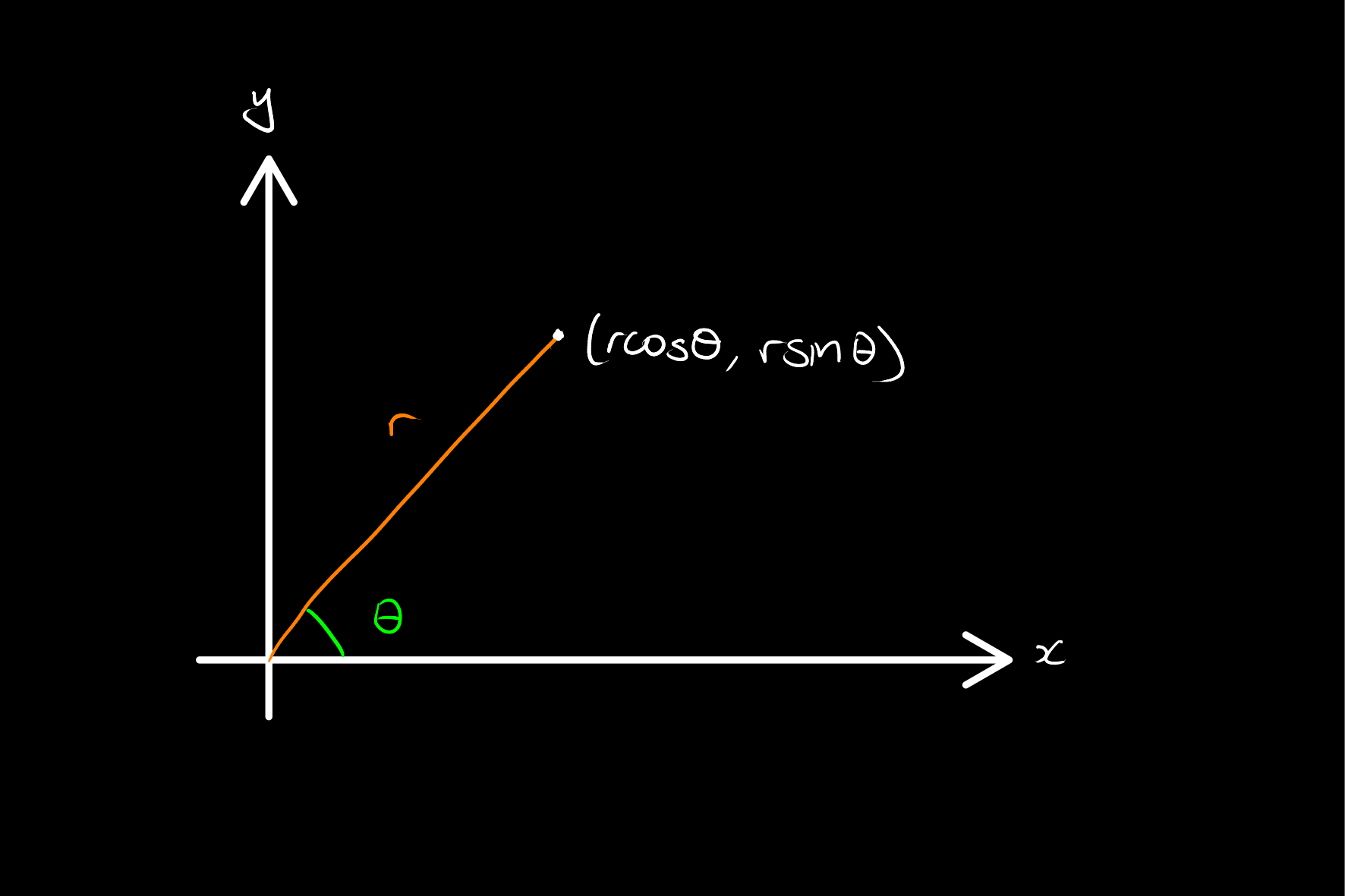Polar Coordinates
Definition
Polar coordinates are a coordinate system for

Theorem
Given coordinates of the form
Proof
Suppose that
Now, suppose that there are two angles
Hence
From the above, it is typical to restrict to